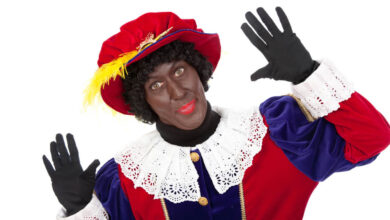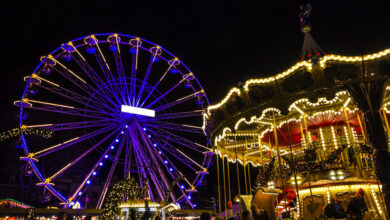
Sinterklaas: a heartwarming Dutch tradition
Sinterklaas is one of the most cherished typical habits in the Netherlands, marking the arrival of Saint Nicholas, the patron saint of children and sailors. This festive occasion takes place annually, culminating in the grand celebration on December 5th, known as Sinterklaasavond or Pakjesavond, when families gather to exchange gifts and enjoy traditional treats.
The tradition and history of Sinterklaas
The tradition of Sinterklaas dates back centuries, with roots in the historical figure of Saint Nicholas of Myra, a 4th-century bishop known for his generosity and compassion. The Dutch celebration began to take shape in the Middle Ages, incorporating various local customs and folklore. According to legend, Sinterklaas arrives in the Netherlands from Spain on a steamboat in mid-November, accompanied by Pieten, his helpers (formerly known as Zwarte Piet). This aspect of the tradition has evolved and sparked significant discussion in recent years.
Upon his arrival, Sinterklaas parades through towns and cities, delighting children with his presence. The festive atmosphere is characterized by colorful decorations, music and excitement as children eagerly anticipate the festivities. The arrival of Sinterklaas marks the beginning of the holiday season in the Netherlands, with various events leading up to pakjesavond.
Celebrating Sinterklaasavond (pakjesavond)
The highlight of the Sinterklaas festivities is pakjesavond, celebrated on the evening of December 5th. On this night, families gather to exchange gifts, often wrapped in creative and humorous ways. It’s a tradition to include witty poems or riddles that poke fun at the recipient, adding an element of playful surprise to the gift-giving experience.
In the days leading up to pakjesavond, children place their shoes by the fireplace or door, hoping to find small treats or toys left by Sinterklaas. They often sing traditional Sinterklaas songs, which add to the excitement of the season. The atmosphere is filled with joy and laughter, as families come together to celebrate the spirit of giving.
Traditional sweets and treats
No Sinterklaas celebration would be complete without the delicious speculaas cookies, pepernoten (small spiced cookies) and chocolate letters that are traditionally given to children. These sweet treats are often used to fill shoes and are enjoyed during festive gatherings. The flavors and aromas of these seasonal delights contribute to the holiday’s cozy and cheerful atmosphere.
Cultural significance and modern perspectives
Sinterklaas holds a significant place in Dutch culture, representing the values of kindness, generosity and togetherness. It is a time for families to bond, create memories and teach children the importance of giving. While the traditional image of Zwarte Piet has come under scrutiny and led to discussions about race and representation, many communities have adapted their celebrations to embrace a more inclusive approach. This evolution reflects the changing dynamics of Dutch society while maintaining the essence of the Sinterklaas festivities.
A timeless celebration
As Sinterklaas continues to be a beloved holiday in the Netherlands, it remains a testament to the country’s rich traditions and cultural heritage. The joy of gift-giving, the warmth of family gatherings and the delightful treats all contribute to a magical experience for both children and adults. For many Dutch people, Sinterklaas is not just a holiday but a cherished part of their childhood memories and cultural identity. Each year, the arrival of Sinterklaas heralds the start of a festive season filled with love, laughter and togetherness, ensuring that this timeless celebration remains alive in the hearts of many.



